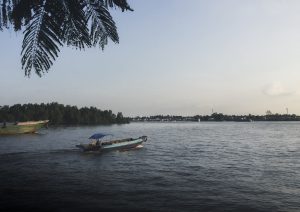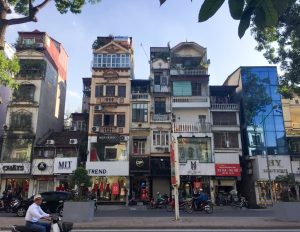A heritage city full of charm, Ipoh is one of the biggest up and coming tourism destinations in Malaysia and Asia whole. Let the city take you back in time as you wander through its streets covered in murals, visit ancient cave temples, sip on Ipoh White Coffee and admire its diverse architecture.
Ipoh in central Malaysia may not be as famous as its neighbouring Kuala Lumpur, Cameron Highlands or Penang, but it’s fast becoming a destination in its own right. It was recently coined the “hipster capital of Malaysia” by several tourism boards and national newspapers, with the aim to kickstart its tourism sector.
Ipoh is clearly on the rise, so make sure to visit and spend the days wandering the streets of this gorgeous heritage before it gets too busy.
Is Ipoh Worth Visiting?
You might wonder whether adding Ipoh to your Malaysia trip is worth it or not. Yes, is the short answer. In fact, Ipoh was one of our favourite places we visited on our 2-month journey across the Malaysian Peninsula and islands.
It’s a historical city full of colonial and traditional Chinese architecture. It’s one of the best places in the country to try out local cuisine, plus they are particularly well-known for their coffee – the Ipoh White Coffee.
The scenery of the region with its stunning limestone karst mountains and rivers is a joy to behold by any nature seeker or a photographer. There’s also several beautiful hikes to choose from for the more adventurous.
If culture is more your thing, Perak has some of the most impressive cave temples we have come across on our travels.
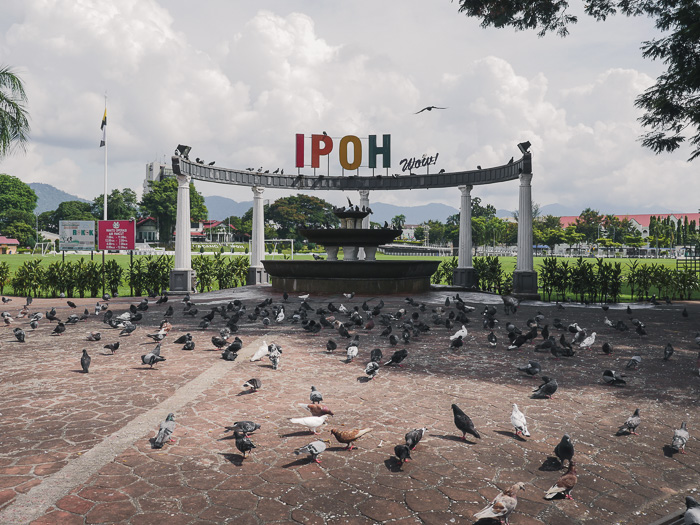
Recent History of Ipoh, Malaysia
Throughout its history Ipoh, Malaysia has changed quite drastically from a sleepy village in the first half of the 19th century to a booming tin mining centre less than a century later.
However, these early successes were quickly brought to a standstill by the Great Fire of Ipoh in 1892, where over half of the town was destroyed. The city was was subsequently quickly rebuilt in time for the second tin rush in the 1920s and 1930s. Unfortunately, this growth stagnated in the 1970’s due to the depletion of local tin deposits and the collapse of its prices.
During its hey-day, Ipoh was regarded as one of the richest cities in South East Asia.
In 2012, Ng Sek San, one of Malaysia’s most famous architects decided to restore a once Chinese opera performers’ lodgings into a funky guesthouse. This in turn created the perfect opportunity for re-establishing the city as a tourist destination.
Unsurprisingly, Ipoh was once again on the map. Since then, hipster cafes and eye-catching street murals have quickly followed suit, and the tourists have started arriving.
Best Things to Do in Ipoh, Malaysia
With so much to offer, Ipoh and the surrounding area is ideal for history buffs, culture vultures, nature seekers and foodies alike. And best of all, it can easily be explored on any budget.

1 - Take a Stroll through the Old Town
As you wander the streets of the Old Town, you’ll feel as if you’ve been transported back in time. You will bear witness to British colonial architecture and heritage Chinese shophouses. The vast majority of these buildings have been left to the ravages of time, but with the increase in tourism, places are now being restored, with money being put in to revitalise the city.
The street art scene is fast becoming one of the highlights of a visit to Ipoh, just as it is in Georgetown and Malacca.
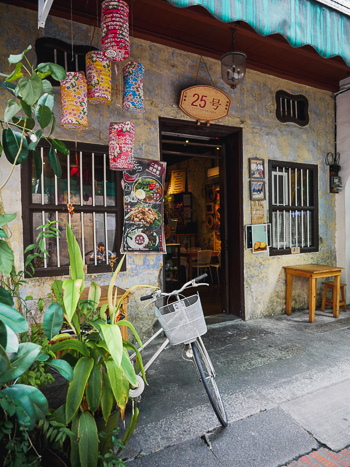

If you want a more in-depth look into the history of the city, we recommend embarking on the Ipoh Heritage Trail walk. It comprises of 27 points of interest, and will take you from the Old Town to the more developed current day business area.
For detailed walking routes and more information on the points of interest, Ipoh Heritage Trail is a great resource.
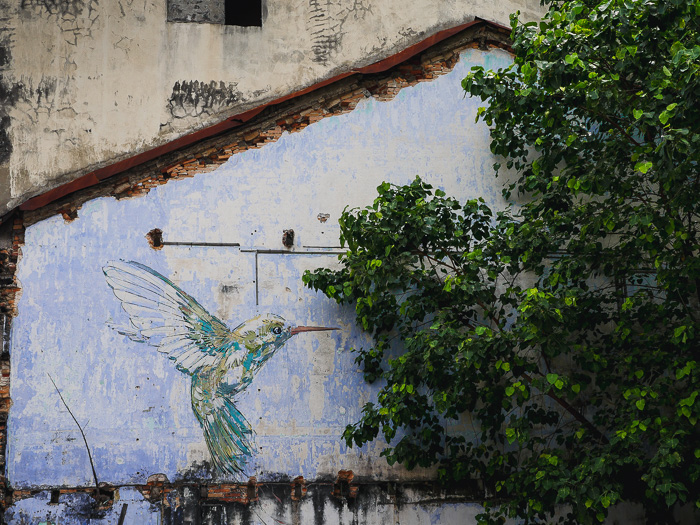
// Concubine Lanes
The infamous Concubine Lane is nowadays a thriving tourist hotspot, but back in the 20th century, it was well-known for an entirely different reason.
After the Great Fire, a tin-mining millionaire, Yao Tet Shin purchased three lanes in the newly rebuilt town, giving one to his wife and two concubines. Now known as the Wife Lane, First Concubine Lane and Second Concubine Lane. It is said this is where the local tin-mining tycoons and British officers kept their mistresses.


Arguably, Concubine Lane is the busiest area in the Old Town, popular with locals and tourists alike.
It’s a bit more subdued now than it was back in the day. Instead of brothels and opium dens, you’ll find countless shops, restaurants, cafes and even a boutique hotel. The oldest shop on the lane is the highly popular Restoran Wong Koh Kee. Good luck in finding a seat!
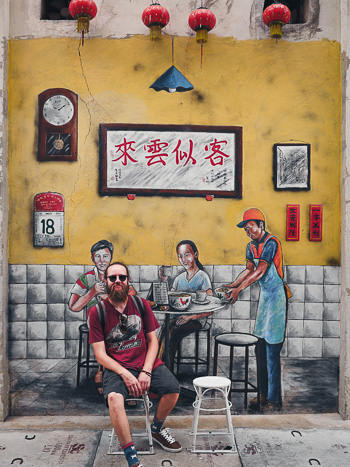

// Street Murals
The street murals of Ipoh are now inviting tourists from all over the world to admire them. After the success of the street murals in Georgetown in 2012, Ipoh followed suit two years later using the same artist, Ernest Zacharevic. Since unveiling his eight murals, local artists have been busy creating their own pieces reflecting the city’s past and present.
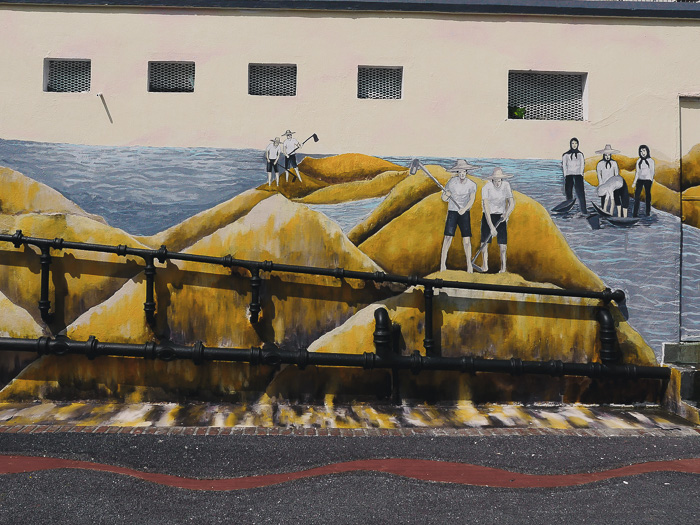
Although a lot of the more famous murals can be seen in the Old Town area, street murals in Ipoh are ever-expanding and you’ll find them all over the city.
2 - Explore the Cave Temples
Perak is the home of almost 30 awe-inspiring cave temples. Even if you are not the biggest fan of exploring temples, a trip to Ipoh would not be complete without visiting at least one of these wondrous complexes.
You can get to the below temples using public transportation. However, we decided to use a Grab taxi from location to location as we were short on time. Conveniently, this was totally hassle-free and very budget-friendly. The wait for taxis at each temple was less than 5 minutes.

// Sam Poh Tong
Often considered the main cave temple complex in Ipoh, Sam Poh Tong was founded by a Chinese monk in the 1890’s. After discovering the location, he decided to make the caves his home as well as a place for meditation and worship. He stayed at the complex for the remainder of his life.
In the 1950’s, Sam Poh Tong was constructed into a Buddhist temple with the aid of committed nuns and monks. It is said to be the largest cave temple in Malaysia.
// Kek Look Tong
Kek Look Tong is located very close to Sam Poh Tong in the peaceful area of Gunung Rapat in the south of the city. It’s one of our favourite temples in Asia, and aptly translates as “a Cave of Great Happiness”. Its’ limestone caverns are surely the highlight of any visit. This impressive cave temple complex has been used as a place of worship since the 1920’s.
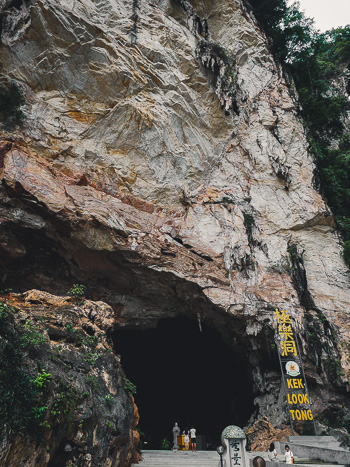
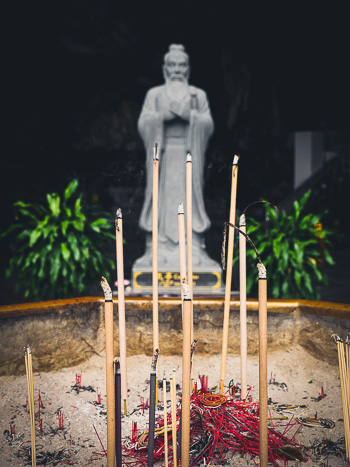

// Perak Tong
Founded in 1926, Perak Tong is arguably the most visited temple complex in Ipoh, and for a reason. From gorgeous murals painted on the walls of the cave to altars and Buddha statues, there is a lot to see here. It was discovered by a couple from Jiaoling, China, who committed 50 years of their lives to the construction of the caves into a place of worship.

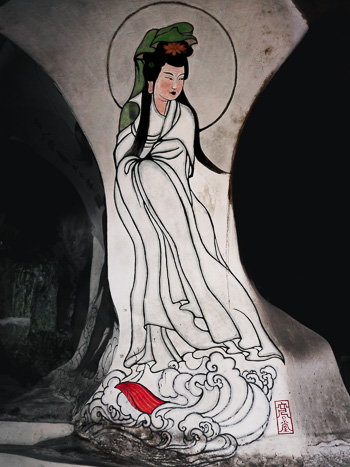
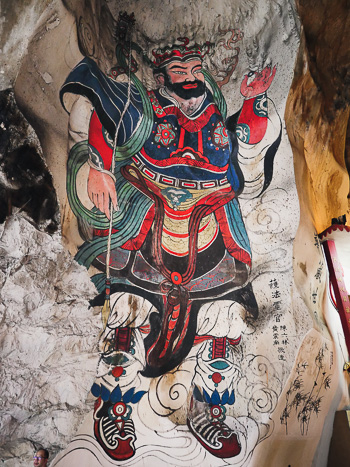
After exploring the caves, we highly recommend taking the 450 steps to the top of the complex. You get excellent views of the region. As long as you are relatively fit, it’s not a strenuous climb. Just be careful as the steps can be very wet and slippery through most of it.
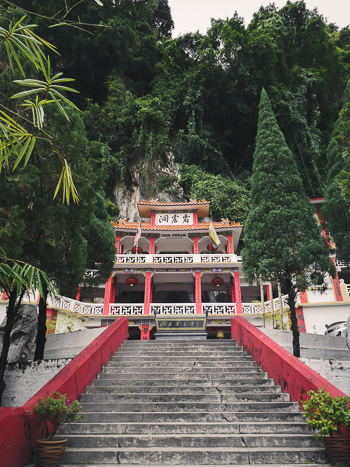
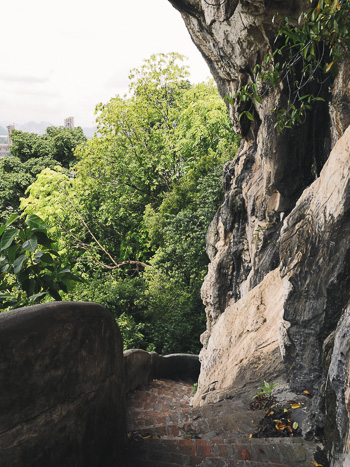

If you have food with you, be prepared to share it with one of the local monkeys. On our visit, a cheeky one grabbed an ice cream from a visitor’s hand and sneaked away to enjoy it!
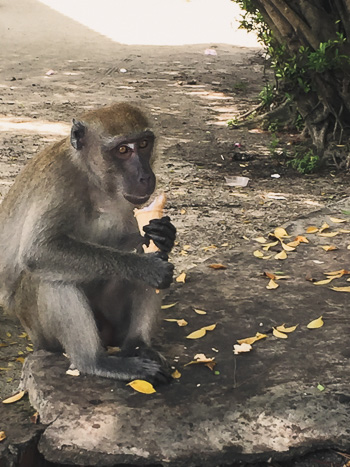
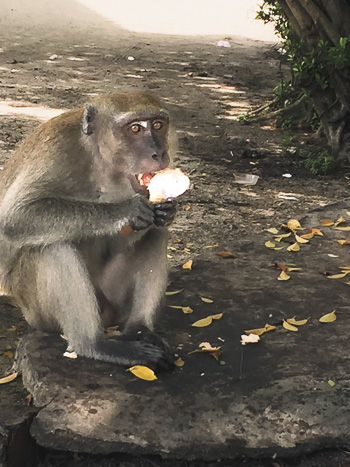
3 - Marvel at the Old Colonial Architecture
Embarking on the Ipoh Heritage Trail will take you past the most important colonial buildings in the city. Many of the centres buildings are from the British colonial period, and reflect the time’s styles.

// Ipoh Railway Station and the Majestic Hotel
Ipoh Railway Station is arguably one of the most striking buildings in the city. It’s the starting point for the Ipoh Heritage Trail walk for a reason.
The station was designed by Arthur Benison Hubback, the designer behind the famous Kuala Lumpur station, and finished in 1917. It features a mix of Neo-Moorish and Indo-Saracenic architecture.
Inside the station, you will also find the historic Majestic Station Hotel. It was once the playing ground of wealthy colonialists and later tourists. The hotel sits empty presently but is set to reopen in 2023. The historic building still holds its grandeur and is thus often called the “Taj Mahal” of Ipoh by locals (if a bit tongue-in-cheek). We cannot wait for the hotel to reopen its doors.

// Ipoh High Court
Sitting opposite the Ipoh Railway Station, the Ipoh High Court is another building designed by renowned architect Arthur Benison Hubbard. Unfortunately, the building is closed to civilians, but you’ll still be able to get a good look from outside.
// Town Hall and Old Post Office
Just across from the Railway Station and the High Court, you’ll find another one of Hubback’s architectural masterpieces.
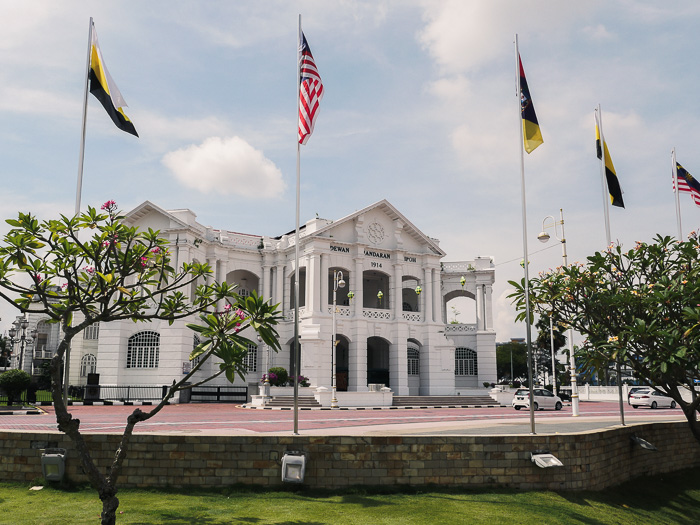
// Kellie’s Castle
Located in Batu Gajah just south of Ipoh, this unfinished castle was built by William Kellie-Smith, a Scottish rubber plantation owner, as a gift for his wife. The construction of the castle started in 1915, but was never finished due to the untimely death of Kellie-Smith.
Legend says the castle is haunted!
4 - Go Searching for the Perfect Cup of Coffee
If you’ve been following us for a while, you may have picked up on our love of coffee. Each destination we go to, we aim to try the local coffee in our never-ending quest for the perfect cup of coffee.
We were in for a treat as Ipoh has a huge coffee culture! The city has countless of hipster cafes offering both local and international drinks. Go and find your favourite!
The city’s signature Ipoh White Coffee probably has something to do with it. Before serving, the coffee beans are first roasted in palm oil margarine, and then mixed with condensed milk. Probably not the healthiest choice for your morning cup of coffee, this decadent concoction is a fantastic treat nonetheless.
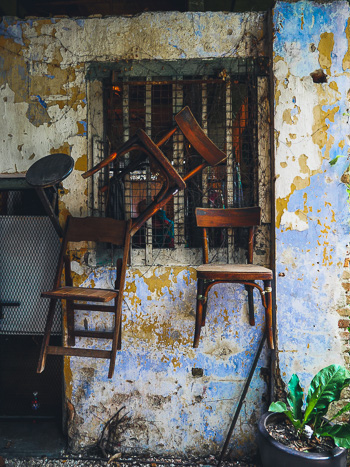
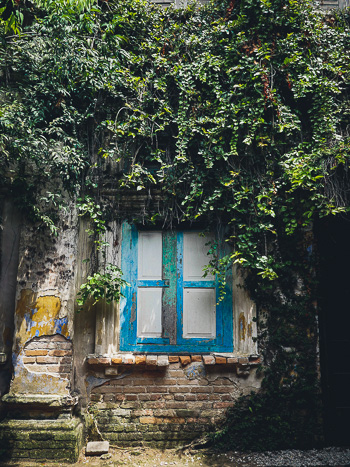
The coffee’s production goes all the way back to the British colonial times. As business was conducted in coffee houses, the Chinese sought to create a more palatable coffee than the bitter one consumed by the Westerners. Tradition has it that the first white coffee in Ipoh was pioneered by a Hainanese coffee roasting master.
Nam Heong White Coffee comes highly recommended by people.
Enjoy it hot or cold.
5 - Sample Local Cuisine
It’s not just all about coffee. Ipoh is also famous for its food, and is a culinary destination in its own right.

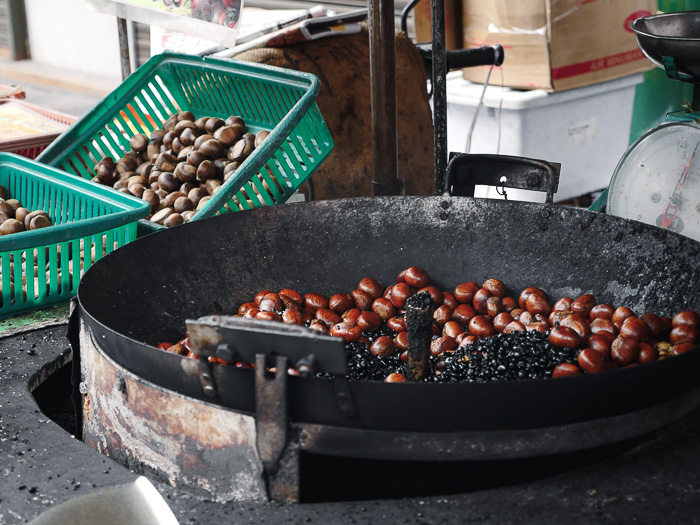
For the sweet tooths, head down to Desert Street, where your options for gratifying your hankerings are endless. Stall after stall of different desserts and the occasional savoury dish. We checked out this popular food street on the recommendation of our guesthouse host. Judging by the amount of locals huddled over their bowls of desserts or noodles, this is definitely the place to be after the sun sets.
Vegan friendly restaurants are also abundant in Ipoh.
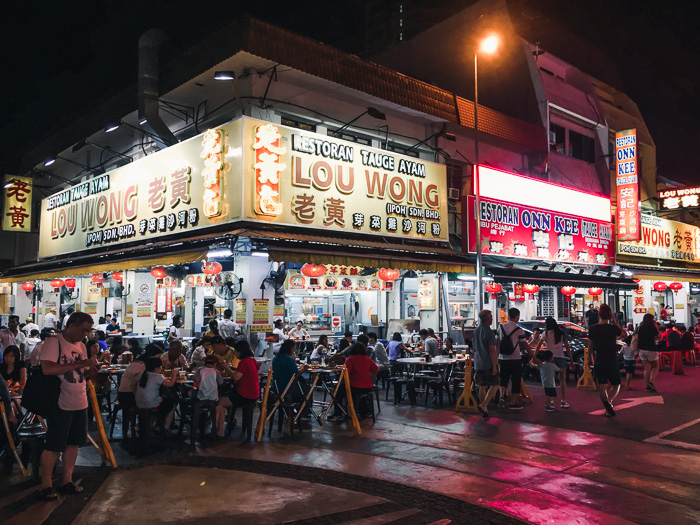
6 - Go Hiking
If you want to go and immerse yourself in nature, Perak has some great hikes to choose from. As we were only in Ipoh for two days, we didn’t have time to go and explore the mountains. However, we’ve read some great things about Bukit Kledang in particular. Located on the western side of town, the peak stands at 800m and can be reached in a couple of hours.
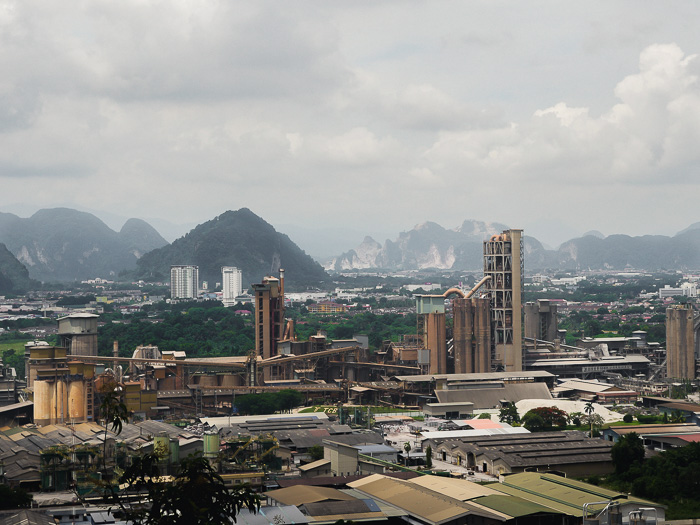
You can choose from five different hiking routes: Main Road, 4-2, 4-3, 4-9 and RTM. Each route has a varying level of difficulty, with 4-2 being the easiest with only a one-hour walk. The full four-hour RTM trek takes you all the way up to the summit.
Best Restaurants in Ipoh, Malaysia
You will be spoiled for choice when it comes to vegan friendly restaurants in Ipoh. Most of what you’ll find are Chinese vegetarian restaurants, with a dizzying array of dishes to choose from. These were some of our favourites!
- Yun Ji Vegetarian
- Fatty Mama Vegetarian
- Restoran Soon Xin Vegetarian
- Old Town White Coffee Ipoh Padang
How to Get to Ipoh, Malaysia
Ipoh, Malaysia is serviced by an airport, train station and bus station. It’s a major hub for travelling around the area and the gateway to the Cameron Highlands. Trains are ludicrously easy to use and excellent value for money in Malaysia. We’d recommend using them whenever possible.
// By Train
Trains head as far north as Padang Besar and Butterworth (for Penang) and as far south as Johor Bahru (and Singapore) via Kuala Lumpur. You should be covered wherever you are going in Malaysia. Tickets prices to KL range between RM25-46 depending on the service you are taking.
Tickets can easily be purchased online at the official KTM website as a foreigner.
We took several trains during our two months in Malaysia and most of them were full. So we do recommend purchasing your tickets a couple of days in advance to make sure you get the train you want.
// By Bus
You can find daily services to various locations around Malaysia, as well as busses to Singapore and Hat Yai in Thailand. Most intercity busses arrive at Terminal Amanjaya, which is located about 8km north of Ipoh. You can get to the city centre either by local bus route 116 every half an hour. Or, if you are pushed for time, you can easily find taxis waiting at the station or order a Grab. Some regional busses travel in and out of Terminal Kidd near the Old Town.
The roads between major cities tend to be new and modern so your journey can be rather speedy. Traffic entering cities can be pretty slow though, so it depends whether you are in a rush or not. We would choose the train when possible.
You can buy tickets from the bus stations, but we’d recommend purchasing your tickets online as the busses do tend to sell out. We used Easybook as they only charge a very small commission for the privilege of using them. We also saw locals using this website for their tickets.
Bus tickets tend to be a bit cheaper than the train on average.
// By Plane
Malaysian Airlines, AirAsia, Malindo Air, Firefly and Scoot service this airport. With flights direct to and from Singapore and in and around Malaysia.
Where to Stay in Ipoh, Malaysia
As tourism keeps growing in Ipoh, Malaysia, so does the options for accommodation. You can find everything from budget dorm rooms to luxury wellness spas and ultra chic city centre boutique hotels.

